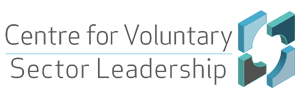You are here
- Home
- Blogs
- Anonymous's blog
- Exploring sustainability credentials: identifying factors to contribute towards long-term resilience
Exploring sustainability credentials: identifying factors to contribute towards long-term resilience
This is the third blog in a series examining sustainability by Visiting Fellow, Dr Helen Britton. Read part one and part two of the series.
When we think about our credentials, we often think in terms of a measurement to indicate our suitability for something: our achievements, a quality, an assumed confidence or ability. This may produce a certificate or a membership to an organisation. Many of these are required to open the doors to clients and customers to sustain our business activities as part of a diversity of regulatory and legislative requirements to trade. As important as these undoubtedly are, this short piece explores the notion that our credentials are more than those important bits of paper. It explores the significance of what underpins the actions we can take to enable us to facilitate a resilience-sustainable mindset – our ‘bigger picture’ and ‘our long-term vision’ - to build our credentials landscape.

This starts by examining how your organisation operates and with whom. Make the time to examine how in-area, or out-of-area your operation’s sphere of activity radiates. Over recent years, many voluntary, community and social enterprise organisations (VCSEs) have increased the number of networked collaborations they have become involved in. Some were intended to be more short-term, high impact responses to the Covid-19 pandemic. However, many have found that in 2023, these short-term activities have now become incorporated into their main service delivery. Many of you reading this blog will have a list of local organisations that have done just that. Operating in a continuous loop of reactivity is unsustainable for the individuals concerned and for any organisation’s mission. Let’s face it, we cannot do everything, and we cannot do what we do well enough if we are not in possession of key pieces of information related to working with other organisations.
Scrutinise a little more carefully the values and ethos of organisations you collaborate with. Explore the economic dependencies that operate in your collaborations of purpose. Is there an equilibrium in this respect? If the relationships work, do they work well enough and benefit all parties. If they don’t, then identify what you need to do to move towards a more balanced equilibrium. If they do, identify the components that sustain the relationship with that organisation. If you are happy to share some of those ‘nuggets’ of best practice, there will an organisation that will benefit from those rich insights around you.
Explore areas around questions, such as:
- Where are the risks in working as we do? Identify them and consider their potential to impact on your operations?
- How do they contribute, or reduce, your organisations resilience and your mission?
- Which networks do we belong to and why?
- How are our networks constituted?
- Identify your own specific list of questions and don’t be afraid to ask them of yourself as a leader, your staff, volunteers, trustees. Everyone has an opinion, a perspective and a voice. Respect it and embrace it.
By turning the spotlight on their practice, one VCSE manager identified several specific areas, where they realised, they had reduced their long-term sustainability. By extending the number of innovative, resourceful collaborations with other organisations, in neighbouring areas, they had increased the number of clients they could support. However, they had also increased their core and revenue costs:
We had spread ourselves too thinly, over too large an area; pushing our costs up in a way we could not really support. We left ourselves a little too economically exposed for a time.”
VCSE manager for small charity supporting people with identified complex social needs
One of the positive outcomes for them was gaining a grant that allowed them to focus on their organisational health and financial strategy. It also enabled them to develop new ideas and approaches, with existing and new colleagues, with more focus on sustainability.
Whatever the role you have within your organisation, we all know that we need to maximise the positive environmental, social and economic impacts of all our personal, professional and business decision-making. Cultivating our thinking to create lasting change, means developing a sustainability-mindset; that is a fusion of our entrepreneurial, business, technology and socially focussed thinking. I try to do this with my own core interests of education, energy-conservation and creativity. This has produced several very interesting and innovative ways of engaging participants in learning: a community café, a sunken community vegetable garden, retrofitting energy-saving ideas creating a network of community volunteers fitting solar panels to run outdoor lighting.
Retrofit is about planning and making improvements to buildings to improve energy efficiency. You could even start a community retrofit project in your area. There is some very useful information available from the charity, ‘Centre for Sustainable Energy’ (www.cse.org.uk) and a ‘Guidance document for community groups’ by Jenna Wilcox (June 2023). Well worth the read.
VCSEs are amongst some of the most creative, energising and proactive organisations I have worked with. However, many have simply struggled to keep the lights and the heating on with costs for energy soaring, and likely to stay high for the immediate future. This is for many simply unsustainable. I know of a couple of community centres that have asked their client base to ensure that they charge their electrical devices (i.e. mobile phones, electric scooters, mobility chairs) at home prior to arriving at the centre. Both centres had registered a steep increase in their energy bills as attendees had sought to save on their own electricity bills by taking the opportunity of charging at their local centre.
Outmoded forms of heating cost but so too does purchasing new systems. Investigate local and national schemes that offer renewable energy technologies for non-profit organisations. Several VCSEs I have spoken with this year, are considering some very interesting ideas. There are solar carport options for organisations looking to offer the opportunity to charge electric vehicles and generate an income from low grade parking spaces. They offer the potential to produce a cash positive outcome – they make money from them. This is a great idea where profits are reinvested into the local community. What about considering a community energy group?
Refining your sustainability innovation strategy requires transformational change in thinking and action. Leaders in all sector organisations are in a strong position to drive change. Active leadership affects the most valuable resource of any organisation in any sector – its workforce. The impetus to ‘make something happen’ grows from us initiating, cultivating and applying innovative thinking and facilitating new ways of doing. By increasing our attention and application to sustainability, we will increase our resilience going forwards.
23rd January 2024



